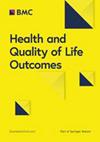在德国创伤登记 DGU® 中实施与健康相关的生活质量--试点研究的初步结果
IF 3.2
2区 医学
Q1 HEALTH CARE SCIENCES & SERVICES
引用次数: 0
摘要
德国每年约有 3 万人受到严重创伤。院前和医院护理的不断进步大大降低了多发性创伤患者的死亡率。随着存活率的不断提高,功能性结果、与健康相关的生活质量(hrQoL)和工作能力正变得越来越重要。本研究的目的一方面是介绍重伤患者的反应行为,另一方面是研究影响重创患者 12 个月后生活质量和工作能力的因素。在这些初步结果的基础上,未来将在已建立的 TraumaRegister DGU® 中纳入标准结果工具。2018年,患者[受伤严重程度评分(ISS)≥16;年龄:18-75岁]在六家研究医院接受了多中心为期一年的创伤后随访。除了使用短式健康调查表(SF-12)评估hrQoL外,还使用了五个附加问题(治疗满意度、工作能力、创伤相关医疗、相关身体残疾、与受伤前状态相比的hrQoL)。在所联系的 1,162 名患者中,有 594 人做出了回复并被纳入分析。受伤后的 hrQoL 在性别上没有明显的统计学差异。但在年龄方面,受伤时年龄越小,SF-12 身体总分越高。此外,根据国际伤残标准(ISS)的测量,身体感知的生活质量与创伤的严重程度有显著的统计学差异,而精神感知的生活质量则与受伤的严重程度没有差异。大部分重伤患者对治疗结果非常满意(42.2%)或满意(39.9%)。需要强调的是,受伤严重程度较高(ISS>50)的患者对治疗结果表示非常满意的比例平均更高(46.7%)。共有 429 名患者提供了伤后 12 个月的工作能力信息。其中,194 名患者(45.2%)完全就业,58 名患者(13.5%)就业受限。本研究结果表明,对多发性创伤后的伤后 hrQoL 和工作能力进行结构化评估非常重要。为使多发性创伤幸存者获得最佳治疗效果,应进一步研究如何在跨部门治疗过程中发现可影响hrQoL和工作能力的风险因素。本文章由计算机程序翻译,如有差异,请以英文原文为准。
Implementation of health-related quality of life in the German TraumaRegister DGU® – first results of a pilot study
Approximately 30,000 people are affected by severe injuries in Germany each year. Continuous progress in prehospital and hospital care has significantly reduced the mortality of polytrauma patients. With increasing survival rates, the functional outcome, health-related quality (hrQoL) of life and ability to work are now gaining importance. Aim of the study is, the presentation of the response behavior of seriously injured patients on the one hand and the examination of the factors influencing the quality of life and ability to work 12 months after major trauma on the other hand. Building on these initial results, a standard outcome tool shall be integrated in the established TraumaRegister DGU® in the future. In 2018, patients [Injury Severity Score (ISS) ≥ 16; age:18–75 years] underwent multicenter one-year posttraumatic follow-up in six study hospitals. In addition to assessing hrQoL by using the Short-Form Health Survey (SF-12), five additional questions (treatment satisfaction; ability to work; trauma-related medical treatment; relevant physical disability, hrQoL as compared with the prior to injury status) were applied. Of the 1,162 patients contacted, 594 responded and were included in the analysis. The post-injury hrQoL does not show statistically significant differences between the sexes. Regarding age, however, the younger the patient at injury, the better the SF-12 physical sum score. Furthermore, the physically perceived quality of life decreases statistically significantly in relation to the severity of the trauma as measured by the ISS, whereas the mentally perceived quality of life shows no differences in terms of injury severity. A large proportion of severely injured patients were very satisfied (42.2%) or satisfied (39.9%) with the treatment outcome. It should be emphasized that patients with a high injury severity (ISS > 50) were on average more often very satisfied with the treatment outcome (46.7%). A total of 429 patients provided information on their ability to work 12 months post-injury. Here, 194 (45.2%) patients had a full employment, and 58 (13.5%) patients were had a restricted employment. The present results show the importance of a structured assessment of the postinjury hrQoL and the ability to work after polytrauma. Further studies on the detection of influenceable risk factors on hrQoL and ability to work in the intersectoral course of treatment should follow to enable the best possible outcome of polytrauma survivors.
求助全文
通过发布文献求助,成功后即可免费获取论文全文。
去求助
来源期刊
CiteScore
7.30
自引率
2.80%
发文量
154
审稿时长
3-8 weeks
期刊介绍:
Health and Quality of Life Outcomes is an open access, peer-reviewed, journal offering high quality articles, rapid publication and wide diffusion in the public domain.
Health and Quality of Life Outcomes considers original manuscripts on the Health-Related Quality of Life (HRQOL) assessment for evaluation of medical and psychosocial interventions. It also considers approaches and studies on psychometric properties of HRQOL and patient reported outcome measures, including cultural validation of instruments if they provide information about the impact of interventions. The journal publishes study protocols and reviews summarising the present state of knowledge concerning a particular aspect of HRQOL and patient reported outcome measures. Reviews should generally follow systematic review methodology. Comments on articles and letters to the editor are welcome.

 求助内容:
求助内容: 应助结果提醒方式:
应助结果提醒方式:


